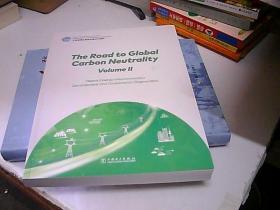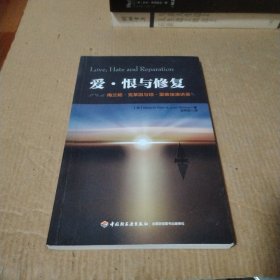
全球碳中和之路(英文版):The Road to Global Carbon Neutrality
¥ 168 2.9折 ¥ 580 九品
仅1件
北京朝阳
认证卖家担保交易快速发货售后保障
作者全球能源互联网发展合作组织
出版社中国电力出版社
出版时间2021-10
版次1
印刷时间2021-10
印次1
装帧平装
货号2-5
上书时间2022-04-18
- 最新上架
商品详情
- 品相描述:九品
图书标准信息
- 作者 全球能源互联网发展合作组织
- 出版社 中国电力出版社
- 出版时间 2021-10
- 版次 1
- ISBN 9787519860172
- 定价 580.00元
- 装帧 平装
- 页数 736页
- 字数 1,409.000千字
- 【内容简介】
-
本报告是《全球碳中和之路》的英文版。
本报告聚焦全球碳中和之路研究,从战略全局认识和把握全球碳中和目标,结合自身在全球能源转型、清洁发展、电力规划、气候环境领域的研究成果,对全球碳达峰碳中和问题的重大意义、形势任务、思路目标、重点举措、综合路径、行业判断、区域特征等进行了深入研究,编制形成《全球碳中和之路》。
本报告共分为18章。第1章介绍全球气候变化与碳中和的形势与挑战。第2章提出全球碳中和的必由之路,即以全球能源互联网为基础平台,包括五大部门、六大洲、六大关键技术、市场与基础设施支撑的全球碳中和之路综合方案。第3章介绍全社会净零路径与全球能源互联网方案特征。第4~8章,分别对能源行业净零路线图、工业行业净零路线图、交通领域净零路线图、建筑及生活领域净零路线图和农业及土地利用增汇路线图进行了全面详细的介绍。第9~14章分别介绍亚洲、欧洲、非洲、北美洲、中南美洲、大洋洲碳中和实现路径,从发展现状、减排路径、能源转型、清洁能源、配置网络等多个维度,结合各洲发展实际,系统论述了各洲的碳中和路径。第15章介绍清洁替代、电能替代、能源互联、能源存储、氢能与电制、碳捕集封存与利用等六大零碳负碳关键技术。第16章介绍建立全球电碳市场的市场保障机制。第17章介绍促进三网融合发展的基础实施保障机制。第18章介绍综合效益与政策机制。 - 【作者简介】
- 全球能源互联网发展合作组织(简称合作组织),是由致力于推动世界能源可持续发展的相关企业、组织、机构和个人等自愿组成的国际组织。注册地设在北京。合作组织的宗旨是推动构建全球能源互联网,以清洁和绿色方式满足全球电力需求,推动实现联合国“人人享有可持续能源”和应对气候变化目标,服务人类社会可持续发展。合作组织将积极推广全球能源互联网理念,组织制定全球能源互联网发展规划,建立技术标准体系,开展联合技术创新、重大问题研究和国际交流合作,推动工程项目实施,提供咨询服务,引领全球能源互联网发展。
- 【目录】
-
1 Climate Change and Carbon Neutrality?001
1.1 Global Climate Change Dynamics?002
1.1.1 Causes of Climate Change?002
1.1.2 Impacts of Climate Change?008
1.1.3 Climate and Environmental Crisis?014
1.2 Effectiveness of Global Actions?016
1.2.1 Global Climate Governance Actions?017
1.2.2 Progress of National Mitigation?021
1.2.3 Efforts of International Institutions?024
1.3 Significance of Carbon Neutrality?026
1.3.1 Resolving the Climate and Environment Crisis?026
1.3.2 Advancing High-quality Economic Development?027
1.3.3 Realizing Global Sustainable Development?028
1.3.4 Building a Community of Shared Future for Mankind?028
1.4 Challenges for Carbon Neutrality?029
1.4.1 Large Gap to Reach the Mitigation Target?029
1.4.2 Strong Path-dependence on the Traditional Development Model?031
1.4.3 Lack of Systematic Schemes?032
1.4.4 Multifacet Challenges in Global Cooperation?033
1.5 Summary?035
2 The Essential Path for Global Carbon Neutrality?037
2.1 Mitigation Mechanism?038
2.1.1 Impact Factors?040
2.1.2 Directions of Carbon Reduction?041
2.2 GEI Theory?043
2.2.1 Development Idea?044
2.2.2 Development Direction?046
2.2.3 System Components?050
2.2.4 Well-equipped Conditions?052
2.3 Development Trends?054
2.3.1 Clean Development Trends?055
2.3.2 Energy Interconnection Trends?057
2.3.3 Pivotal Roles of UHV?058
2.4 Comprehensive Solution?061
2.5 Summary?062
3 GEI Carbon Neutrality Pathway?063
3.1 Overall Model Approach?064
3.1.1 Research Methodology?064
3.1.2 Analysis Model?065
3.2 Global Development Projection?070
3.2.1 Economy and Industry?071
3.2.2 Population and Society?076
3.2.3 Energy and Emissions?079
3.3 Global Pathway towards Net Zero Emissions?084
3.3.1 Overall Pathway towards Net Zero Emissions?084
3.3.2 Pathway towards Net Zero Emissions by Sector?086
3.4 Energy Transition Pattern?090
3.4.1 Clean and Zero-carbon Energy Supply?090
3.4.2 Electric-centric Energy Consumption?094
3.4.3 Wide-area Interconnection and Allocation of Energy?098
3.4.4 Intelligent and Flexible Operation of Energy?100
3.5 Comprehensive Comparison?105
3.5.1 Core Features?106
3.5.2 Technical Advantages?108
3.5.3 Economic Advantages?110
3.5.4 Effectiveness of Emission Reduction?112
3.5.5 Values of Energy Interconnection?115
3.6 Summary?119
_x000c_
4 Net Zero Emissions Roadmap for Energy Sector?121
4.1 Phase-out of Fossil Fuels?122
4.1.1 Coal?122
4.1.2 Oil?136
4.1.3 Natural Gas?145
4.2 Development of Clean Energy?154
4.2.1 Solar Energy?154
4.2.2 Wind Energy?160
4.2.3 Hydropower?165
4.2.4 Nuclear Power?170
4.2.5 Biomass Energy?171
4.3 Global Energy Allocation?174
4.3.1 Backbone Power Grid Network?174
4.3.2 Green Hydrogen Allocation System?184
4.4 Summary?192
5 Net Zero Emissions Roadmap for Industries?195
5.1 Iron and Steel Industry?196
5.1.1 Status Quo and Trend?196
5.1.2 Target and Pathway of Decarbonization?200
5.1.3 Direction and Priorities of Decarbonization?202
5.2 Chemical Industry?212
5.2.1 Status Quo and Trend?212
5.2.2 Target and Pathway of Decarbonization?217
5.2.3 Direction and Focus of Decarbonization?219
5.3 Construction Materials Industry?226
5.3.1 Status Quo and Trend?226
5.3.2 Target and Pathway of Decarbonization?231
5.3.3 Direction and Priorities of Decarbonization?233
5.4 Other Industries?238
5.4.1 Electrification Enhancement?238
5.4.2 Comprehensive Use of Clean Energy?240
5.4.3 Energy Conservation and Energy Efficiency Enhancement?242
5.5 Summary?245
6 Net Zero Emissions Roadmap for Transportation Sector?247
6.1 Road?248
6.1.1 Status Quo and Trend?248
6.1.2 Target and Pathway of Decarbonization?255
6.1.3 Direction and Priorities of Decarbonization?258
6.2 Shipping and Aviation?269
6.2.1 Status Quo and Trend?269
6.2.2 Target and Pathway of Decarbonization?273
6.2.3 Direction and Priorities of Decarbonization?276
6.3 Summary?279
7 Net Zero Emissions Roadmap for Building Sector?281
7.1 Status Quo and Trend?282
7.1.1 Energy Consumption and Carbon Emission?283
7.1.2 Development Trend?285
7.1.3 Development Challenges?286
7.2 Target and Pathway of Decarbonization?287
7.3 Direction and Priorities of Decarbonization?289
7.3.1 Electricity Replacement?289
7.3.2 Energy Efficiency Enhancement?293
7.4 Summary?298
8 Net Zero Emissions Roadmap for AFOLU Sector and Non-CO2 GHGs?299
8.1 Emissions and Carbon Sink Increase from AFOLU?300
8.1.1 Status Quo and Trend?300
8.1.2 Target and Pathway of Mitigation?301
8.1.3 Measures and Priorities of Mitigation?302
8.2 Emission Reduction of Non-CO2 GHGs?304
8.2.1 Status Quo and Trend?306
8.2.2 Target and Pathway of Mitigation?307
8.2.3 Measures and Priorities of Mitigation?308
8.3 Summary?311
Volume II
9 Global Electricity-Carbon Market?313
9.1 Status and Challenge of Development?314
9.2 Needs and Trends?318
9.2.1 Integrated Development Needs?318
9.2.2 Integrated Development Trends?319
9.3 Guiding Principle and Connotation?321
9.3.1 Guiding Principle?321
9.3.2 Market Connotation?321
9.4 Market Construction?323
9.4.1 Market Structure?323
9.4.2 Construction Plan?324
9.5 Development Path?336
9.5.1 Objective for 2030?336
9.5.2 Objective for 2040?338
9.5.3 Objective for 2050?340
9.6 Future Benefits?341
9.7 Summary?343
10 Key Net-Zero & Carbon-Negative Technologies?345
10.1 UHV Transmission Technology?346
10.1.1 UHV AC Transmission?347
10.1.2 UHV DC Transmission?349
10.1.3 VSC-HVDC Transmission?352
10.1.4 High Voltage Large-scale Submarine Cable?356
10.2 Clean Replacement Technologies?357
10.2.1 Photovoltaic Power Generation?357
10.2.2 Concentrating Solar Power Generation?360
10.2.3 Wind Power Generation?362
10.2.4 Hydropower Generation?365
10.2.5 Nuclear Electric Power Generation?368
10.2.6 Hydrogen Power Generation?369
10.3 Energy-Saving and Electricity Replacement Technologies?371
10.3.1 Lighting Technology?371
10.3.2 Electric Heating Technology?372
10.3.3 Electrical Metallurgy Technology?374
10.3.4 Electrified Transportation Technology?375
10.4 Massive Energy Storage Technology?377
10.4.1 Pumped Energy Storage?378
10.4.2 Novel Energy Storage?379
10.5 Hydrogen Energy and Power to Fuels & Raw Material?382
10.5.1 Power to Hydrogen?382
10.5.2 Hydrogen Storage and Transportation?383
10.5.3 Power to Fuels & Raw Material?386
10.6 Carbon Capture, Utilization and Storage Technologies?388
10.6.1 Carbon Dioxide Capture, Utilization and Storage?388
10.6.2 Bio-Energy with Carbon Capture and Storage?390
10.6.3 Direct Air Capture?391
10.7 Digital Intelligence Technologies?392
10.7.1 Sensor?393
10.7.2 Communications Technologies?394
10.7.3 Big Data and AI?396
10.8 Summary?398
11 Carbon Neutrality Pathway for Asia?399
11.1 Status Quo and Trend?400
11.1.1 Economic and Social Development?400
11.1.2 Resource and Environment?403
11.1.3 Energy and Power?404
11.2 Mitigation Path?406
11.2.1 Mitigation Ideas?406
11.2.2 Mitigation Priorities?407
11.3 Energy Transition?408
11.3.1 Primary Energy?408
11.3.2 Final Energy?409
11.3.3 Power Demand?411
11.3.4 Power Supply?414
11.4 Clean Energy?416
11.4.1 Solar Power?416
11.4.2 Wind Power?420
11.4.3 Hydropower?422
11.5 Allocation Network?425
11.5.1 Development Positioning?425
11.5.2 Power Grid Interconnection?427
11.5.3 Key Interconnection Projects?430
11.6 Summary?433
12 Carbon Neutrality Pathway for Europe?435
12.1 Status Quo and Trend?436
12.1.1 Economic and Social Development?436
12.1.2 Resource and Environment?438
12.1.3 Energy and Power?440
12.2 Mitigation Path?442
12.2.1 Mitigation Ideas?442
12.2.2 Mitigation Priorities?444
12.3 Energy Transition?444
12.3.1 Primary Energy?444
12.3.2 Final Energy?446
12.3.3 Power Demand?447
12.3.4 Power Supply?450
12.4 Clean Energy?452
12.4.1 Wind Power?452
12.4.2 Hydropower?456
12.4.3 Solar Power?457
12.5 Allocation Network?459
12.5.1 Development Positioning?459
12.5.2 Power Grid Interconnection?461
12.5.3 Key Interconnection Projects?465
12.6 Summary?468
13 Carbon Neutrality Pathway for Africa?471
13.1 Status Quo and Trend?472
13.1.1 Economic and Social Development?472
13.1.2 Resource and Environment?474
13.1.3 Energy and Power?476
13.2 Mitigation Path?480
13.2.1 Mitigation Ideas?480
13.2.2 Mitigation Priorities?481
13.3 Energy Transition?482
13.3.1 Primary Energy?482
13.3.2 Final Energy?483
13.3.3 Power Demand?483
13.3.4 Power Supply?487
13.4 Clean Energy?489
13.4.1 Solar Power?489
13.4.2 Wind Power?493
13.4.3 Hydropower?495
13.5 Allocation Network?504
13.5.1 Development Positioning?504
13.5.2 Power Grid Interconnection?505
13.5.3 Key Interconnection Projects?509
13.6 Summary?514
14 Carbon Neutrality Pathway for North America?517
14.1 Status Quo and Trend?518
14.1.1 Economic and Social Development?518
14.1.2 Resource and Environment?520
14.1.3 Energy and Power?521
14.2 Mitigation Path?524
14.2.1 Mitigation Ideas?524
14.2.2 Mitigation Priorities?525
14.3 Energy Transition?526
14.3.1 Primary Energy?526
14.3.2 Final Energy?527
14.3.3 Power Demand?528
14.3.4 Power Supply?530
14.4 Clean Energy?533
14.4.1 Solar Power?533
14.4.2 Wind Power?535
14.4.3 Hydropower?538
14.5 Allocation Network?540
14.5.1 Development Positioning?540
14.5.2 Power Grid Interconnection?542
14.5.3 Key Interconnection Projects?546
14.6 Summary?548
15 Carbon Neutrality Pathway for Central and South America?551
15.1 Status Quo and Trend?552
15.1.1 Economic and Social Development?552
15.1.2 Resource and Environment?554
15.1.3 Energy and Power?556
15.2 Mitigation Path?558
15.2.1 Mitigation Ideas?558
15.2.2 Mitigation Priorities?559
15.3 Energy Transition?560
15.3.1 Primary Energy?560
15.3.2 Final Energy?561
15.3.3 Power Demand?563
15.3.4 Power Supply?565
15.4 Clean Energy?567
15.4.1 Solar Power?567
15.4.2 Wind Power?571
15.4.3 Hydropower?574
15.5 Allocation Network?579
15.5.1 Development Positioning?579
15.5.2 Power Grid Interconnection?580
15.5.3 Key Interconnection Projects?583
15.6 Summary?585
16 Carbon Neutrality Pathway for Oceania?587
16.1 Status Quo and Trend?588
16.1.1 Economic and Social Development?588
16.1.2 Resource and Environment?590
16.1.3 Energy and Power?591
16.2 Mitigation Path?594
16.2.1 Mitigation Ideas?594
16.2.2 Mitigation Priorities?595
16.3 Energy Transition?596
16.3.1 Primary Energy?596
16.3.2 Final Energy?597
16.3.3 Power Demand?598
16.3.4 Power Supply?600
16.4 Clean Energy?603
16.4.1 Solar Power?603
16.4.2 Wind Power?606
16.4.3 Hydropower?607
16.5 Allocation Network?609
16.5.1 Development Positioning?610
16.5.2 Power Grid Interconnection?611
16.5.3 Key Interconnection Projects?612
16.6 Summary?613
17 Comprehensive Benefits and Development Prospects?615
17.1 Comprehensive Benefits?617
17.1.1 Economic Benefits?617
17.1.2 Social Benefits?618
17.1.3 Environmental Benefits?619
17.2 Development Mechanisms?622
17.2.1 Clean Development Mechanism?623
17.2.2 Cooperative Governance Mechanism?624
17.2.3 Collaborative Innovation Mechanism?625
17.2.4 Financial Investment Mechanism?627
17.2.5 Legal Mechanism?628
17.3 Energy Transportation Information Networks Integration?629
17.3.1 Development Requirements?630
17.3.2 Integration Models?631
17.3.3 Main Forms?634
17.3.4 Development Path?639
17.4 Vision of the Future?641
17.4.1 Better Climate and Environment, New Chapter of Ecological
Civilization?642
17.4.2 Unleashing Innovation-driven Vitality in Economic Growth?643
17.4.3 A New Phase of Social Harmony and Civilization?644
17.5 Summary?644
Appendixes?646
Appendix 1 Introduction to Global Energy Interconnection Development and
Cooperation Organization (GEIDCO)?646
Appendix 2 GEI Carbon Neutrality Scenario?650
Appendix 3 Integrated Assessment Model for Global Climate Change?652
Appendix 4 Global Renewable Energy Assessment Model?658
Appendix 5 GEI Planning Model?666
Appendix 6 Glossary?670
点击展开
点击收起
— 没有更多了 —













以下为对购买帮助不大的评价